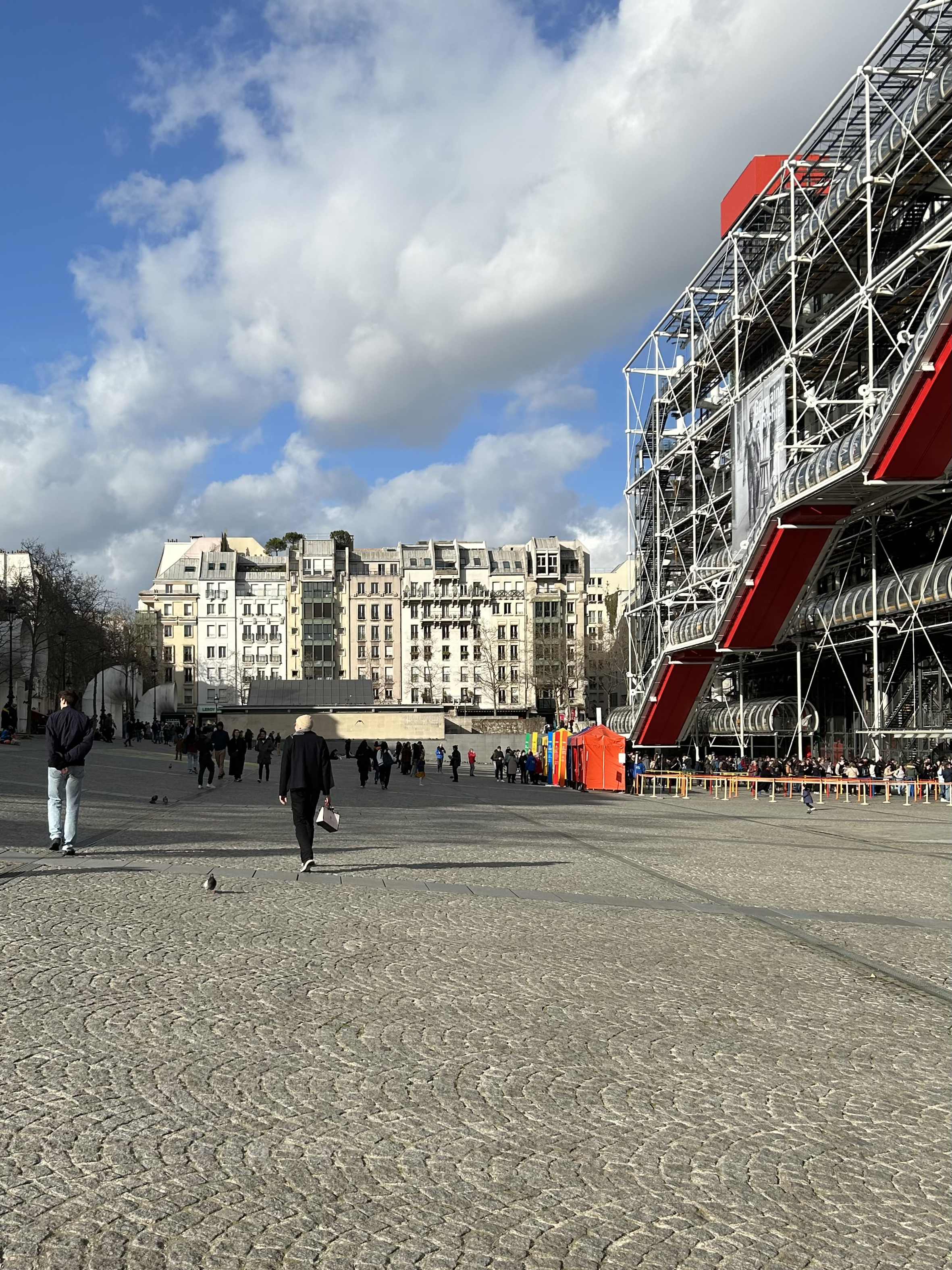Interaction between a Museum and a City in Europe
Framework for Methodological Evaluation
DOI:
https://doi.org/10.31522/p.31.1(65).6Keywords:
city, museum, public space, urban identity, urban transformationAbstract
The article examines different viewpoints on the museum’s role in the transformation of urban identity. The review of existing research aimed at mapping and exploring the museum-city interaction and its features throughout history. The selected studies were categorized and analysed according to the field they cover (urbanism and architecture, economy, sociology and museology). The analysis has shown that the interaction between the museum and the city can be traced throughout history and that it experienced its first rise in the mid- 1970s with the construction of the Pompidou Centre, and then in the late 20th and early 21st century, influenced by modern phenomena of globalization and migration. Due to the new way of interaction, museums have changed their architecture and purposes, repositioning themselves as a new tool for urban transformation. A tentative conceptual framework and methodology were set up based on research literature to evaluate the interaction between the museum and the city. Further research is necessary to explore and define those interactions and tools that will encourage the role of European museums in promoting and transforming urban areas.
References
Abt, J. (2006) ‘The Origins of the Public Museum’. In: MacDonald, S. (ed.), A Companion to Museum Studies. Oxford: Wiley-Blackwell, pp. 115-134. https://doi.org/10.1002/9780470996836.ch8
Bettencourt L.M.A. and Lobo J. (2016) ‘Urban scaling in Europe’, J.R.Soc. Interface 13: 20160005. http://dx.doi.org/10.1098/rsif.2016.0005
Brida, J.G.; Meleddu, M. and Pulina, M. (2012) ‘Understanding Urban Tourism Attractiveness: The Case of the Archaeological Otzi Museum in Bolzano’, Journal of Travel Research, 51(6), pp. 730-741. https://doi.org/10.1177/0047287512437858
Degen, M. and García, M. (2012) ‘The Transformation of the “Barcelona Model”: An Analysis of Culture, Urban Regeneration and Governance’, International Journal of Urban and Regional Research, 36(5), pp. 1022-1038. https://doi.org/10.1111/j.1468-2427.2012.01152.x
De Frantz, M. (2005) ‘From Cultural Regeneration to Discursive Governance: Constructing the Flagship of the Museumsquartier Vienna as a Plural Symbol of Change’, International Journal of Urban and Regional Research, 29(1), pp. 50-66. https://doi.org/10.1111/j.1468-2427.2005.00569.x
Dijkstra, L.; Poelman H. and Veneri, P. (2019) ‘The EU-OECD definition of a functional urban area’, OECD Regional Development Working Papers, No. 2019/11, OECD Publishing, Paris. https://doi.org/10.1787/d58cb34d-en
Evans, G. (2003) ‘Hard-branding the cultural city- from Prado to Prada’, International Journal of Urban and Regional Research, 27(2), pp. 417-440. https://doi.org/10.1111/1468-2427.00455
Griffiths, R. (1993) ‘The Politics of Cultural Policy in Urban Regeneration Strategie’, Policy & Politics, 21(1), pp. 39-46. https://doi.org/10.1332/030557393782453952
Gibson, L. (2013) ‘Piazzas or stadiums: toward an alternative account of museums in cultural and urban development’, Museum worlds, 1, pp. 101-113. https://doi.org/10.3167/armw.2013.010107
Giebelhausen, M. (2006) ‘Museum Architecture: A Brief History’. In: MacDonald, S. (ed.), A Companion to Museum Studies, Oxford: Wiley-Blackwell, pp. 223-244. https://doi.org/10.1002/9780470996836.ch14
Gospodini, A. (2001) ‘Urban Design, Urban Space Morphology, Urban Tourism: An Emerging New Paradigm Concerning Their Relationship’, European Planning Studies, 9(7), pp. 925-934. https://doi.org/10.1080/09654310120079841
Gospodini, A. (2002) ‘European Cities in Competition and the New ‘Uses’ of Urban Design’, Journal of Urban Design, 7(1), pp. 59-73. https://doi.org/10.1080/13574800220129231
Harrison, J. (1993) ‘Ideas of museums in the 1990s’, Museum Management and Curatorship, 13(2), pp. 160-176. https://doi.org/10.1016/0964-7775(94)90074-4
Heidenreich, M. (2013) ’The New Museum Folkwang in Essen. A Contribution to the Cultural and Economic Regeneration of the Ruhr Area?’, European Planning Studies, 23(8), pp. 1529-1547. https://doi.org/10.1080/09654313.2013.817545
Hillier, B. and Tzortzi, K. (2006) ‘Space Syntax: The Language of Museum Space’. In: Macdonald S. (ed.), A Companion to Museum Studies. London, Blackwell Publishing
Kochergina, E. (2017) ‘Urban Planning Aspects of Museum Quarters as an Architectural Medium for Creative Cities’, IOP Publishing, IOP Conf. Series: Materials Science and Engineering, 245(052031) [online]. Available at: https://iopscience.iop.org/article/10.1088/1757-899X/245/5/052031/pdf [Accessed: 31 October 2021]. https://doi.org/10.1088/1757-899X/245/5/052031
Lever, W.F. (1991) ‘Deindustrialisation and the Reality of the Post-industrial City’, Urban Studies, 28(6), pp. 983-999. https://doi.org/10.1080/0042098912008116
Lynch, K. (1960) ‘The image of the city’, Cambridge, Mass: MIT Press
Macdonald, S. (2007) ‘Interconnecting: museum visiting and exhibition design’, CoDesign, 3(sup1), pp. 149-162. https://doi.org/10.1080/15710880701311502
MacLeod, S.; Dodd, J. and Duncan, T. (2015) ‘New museum design cultures: harnessing the potential of design and ‘design thinking’ in museums’, Museum Management and Curatorship, 30(4), pp. 314-341. https://doi.org/10.1080/09647775.2015.1042513
McCall, V. and Gray, C. (2014) ‘Museums and the ‘new museology’: theory, practice and organisational change’, Museum Management and Curatorship, 29(1), pp. 19-35. https://doi.org/10.1080/09647775.2013.869852
McTavish, L. (1998) ‘Shopping in the museum? Consumer spaces and the redefinition of the Louvre’, Cultural studies, 12(2), pp. 168-192. https://doi.org/10.1080/095023898335528
Mitrache, G. (2012) ‘Architecture, Art, Public Space’, Procedia - Social and Behavioural Sciences, 51, pp. 562-566. https://doi.org/10.1016/j.sbspro.2012.08.206
Montanari, E. (2013) ’Local Museums as Strategic Cultural Forces for 21st Century Society’. In: Peressut L.B.; Lanz F. & Postiglione G. (eds.) Mela Book 07 - European Museums in the 21st century: Setting the Framework (vol. 2). Milano: Politecnico di Milano, pp. 553-574.
Newman, P. and Smith, I. (2000) ‘Cultural production, place and politics on the South Bank of the Thames’, International Journal of Urban and Regional Research, 24(1), pp. 9-24. https://doi.org/10.1111/1468-2427.00233
Ozorhon, I.F. and Ozorhon, G. (2015) ‘Investigation of the relationship between museums and cities in the context of image: cases from Istanbul’, Journal of architecture and urbanism, 39(3), pp. 208-217. https://doi.org/10.3846/20297955.2015.1088418
Parr, J.B. (2007) ‘Spatial Definitions of the City: Four Perspectives’, Urban Studies, 44(2), pp. 381-392. https://doi.org/10.1080/00420980601075059
Paül I Agustí, D. (2014) ‘Differences in the location of urban museums and their impact on urban areas’, International Journal of Cultural Policy, 20(4), pp. 471-495. https://doi.org/10.1080/10286632.2013.850498
Plaza, B. (2006) ‘The Return on Investment of the Guggenheim Museum Bilbao’, International Journal of Urban and Regional Research, 30(2), pp. 452-467. https://doi.org/10.1111/j.1468-2427.2006.00672.x
Plaza, B. and Haarich, S. (2009) ‘Museums for Urban Regeneration? Exploring Conditions for Their Effectiveness’, Journal of Urban Regeneration & Renewal, 2(3), pp. 259-271.
Ruggiero, P.; Lombardi, R. and Russo, S. (2021) ‘Museum anchors and social media: possible nexus and future development’, Current Issues in Tourism, pp. 1-18. https://doi.org/10.1080/13683500.2021.1932768
Sklair, L. (2006) ‘Iconic architecture and capitalist globalization’, City, 10(1), pp. 21-47. https://doi.org/10.1080/13604810600594613
Swyngedouw, E.; Moulaert, F. and Rodriguez, A. (2002) ‘Neoliberal Urbanization in Europe: Large-Scale Urban Development Projects and the New Urban Policy’, Antipode, 34(3), pp. 542-577. https://doi.org/10.1111/1467-8330.00254
Taborsky, E. (1982) ‘The sociostructural role of the museum’, International Journal of Museum Management and Curatorship, 1(4), pp. 339-345. https://doi.org/10.1080/09647778209514848
Tali, M. and Pierantoni, L. (2011) ‘New art museums in Central and Eastern Europe and the ideologies of urban space production’, Cultural Trends, 20(2), pp. 167-182. https://doi.org/10.1080/09548963.2011.563910
Tzortzi, K. (2016) ‘Displaying cities: museum space as a presentational device’, Interiors, 7(1), pp. 91-109. https://doi.org/10.1080/20419112.2016.1169748
Tzortzi, K. (2017) ‘Museum architectures for embodied experience’, Museum Management and Curatorship, 32(5), pp. 491-508. https://doi.org/10.1080/09647775.2017.1367258
Van Aalst, I. and Boogaarts, I. (2002) ‘From Museum to Mass Entertainment: The Evolution of the Role of Museums in Cities’, European Urban and Regional Studies, 9(3), pp. 195-209. https://doi.org/10.1177/096977640200900301

Downloads
Published
How to Cite
Issue
Section
License
Copyright (c) 2023 Korina Barišić, Alen Žunić, Bojana Bojanić Obad Šćitaroci

This work is licensed under a Creative Commons Attribution 4.0 International License.
Copyright (c) 2021 authors and journal.
This work is licensed under a Creative Commons Attribution 4.0 International License.
Authors who publish with this journal agree to the following terms:
In agreeing this form, you certify that:
- You read the ethical codex of the PROSTOR available at journal web.
- You submitted work is your original work, and has not previously been published and does not include any form of plagiarism.
- You own copyright in the submitted work, and are therefore permitted to assign the licence to publish to PROSTOR.
- Your submitted work contains no violation of any existing copyright or other third party right or any material of an obscene, libellous or otherwise unlawful nature.
- You have obtained permission for and acknowledged the source of any illustrations, diagrams or other material included in the work of which you are not the copyright owner.
- You have taken due care to ensure the accuracy of the work, and that, to the best of your knowledge, there are no false statements made within it.
- All co-authors of this submitted work are aware of, and in agreement with, the terms of this licence and that the submitted manuscript has been approved by these authors.






